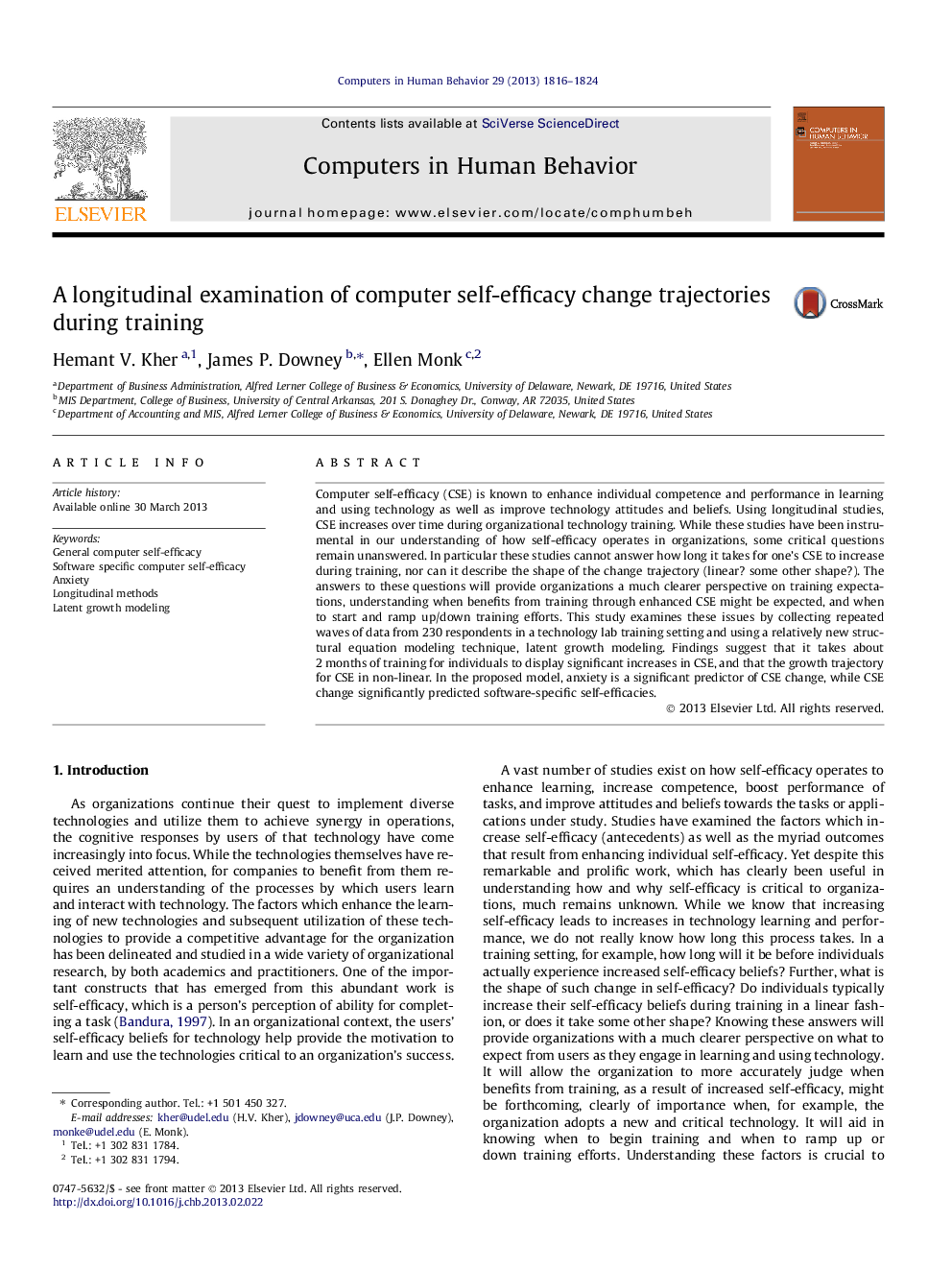| Article ID | Journal | Published Year | Pages | File Type |
|---|---|---|---|---|
| 351086 | Computers in Human Behavior | 2013 | 9 Pages |
•It takes individuals about 2 months to report significant increases in CSE.•The shape of the CSE change trajectory is non-linear.•Models CSE change over time as a latent variable.•Uses latent growth modeling, a SEM modeling technique that requires repeated waves of data.
Computer self-efficacy (CSE) is known to enhance individual competence and performance in learning and using technology as well as improve technology attitudes and beliefs. Using longitudinal studies, CSE increases over time during organizational technology training. While these studies have been instrumental in our understanding of how self-efficacy operates in organizations, some critical questions remain unanswered. In particular these studies cannot answer how long it takes for one’s CSE to increase during training, nor can it describe the shape of the change trajectory (linear? some other shape?). The answers to these questions will provide organizations a much clearer perspective on training expectations, understanding when benefits from training through enhanced CSE might be expected, and when to start and ramp up/down training efforts. This study examines these issues by collecting repeated waves of data from 230 respondents in a technology lab training setting and using a relatively new structural equation modeling technique, latent growth modeling. Findings suggest that it takes about 2 months of training for individuals to display significant increases in CSE, and that the growth trajectory for CSE in non-linear. In the proposed model, anxiety is a significant predictor of CSE change, while CSE change significantly predicted software-specific self-efficacies.
